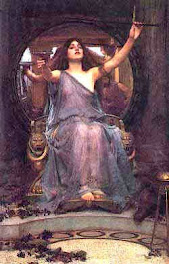 Cannibalism? Mass human sacrifices? Reasonable options when your gods demand it. Or, to be more precise, when your priests say the gods demand it...
Cannibalism? Mass human sacrifices? Reasonable options when your gods demand it. Or, to be more precise, when your priests say the gods demand it... According to Gaea News, "First-century historian Pliny the Elder even suggested that the Celts practiced ritual cannibalism, eating their enemies’ flesh as a source of spiritual and physical strength. But, with only the Romans’ word to rely on, it’s been easy for historians to dismiss such tales as wartime propaganda."
Archaeologists have looked with suspicion for some time at the bog-mummified body of Lindow Man, who came to light in the 1980s. Evidence suggests he was a person of high rank, perhaps even a Druid himself, sacrificed about the time of the Roman invasions. Perhaps to convince the gods to help the people defend themselves. And then came the 2000 discovery of skeletons of up to 150 people, found in a cave in Alveston, England.
"Druids may have killed the victims, who show evidence of skull-splitting blows, in a single event. It may have been the Roman invasion itself that escalated the Druids’ ritualized slaughter, according to the researchers."
That was in Britain, but much of the research on this has come from France - from Ribemont, Picardy, in particular.
Philip Freeman, in The Philosopher and the Druids, writes
We may be shocked at Celtic head-hunting, as were the Greeks and Romans, and wonder if such reports could have been exaggerated by those seeking to portray the Gauls as barbarians - but in truth the classical reports don't begin to compare with he gruesome evidence archaeologists have unearthed ofo such practices in ancient Gaul. At Roquepertuse in southern France, a Celtic sanctuary from the third century B.C. has yielded concrete evidence of severed heads used in rituals. Three pillars from the site contain niches to display human skulls, while similar temples with the skulls still in place have been found elsewhere in southern France.Most likely much of this will be covered on "Secrets of the Druids" on the National Geographic Channel on 27 August.
These sanctuaries, however, pale in comparison with recent finds in northern France. At Ribemont and Gournay, north of Paris, archaeologists have discovered rectangular Celtic sanctuaries from around 300 B.C. that measure over ninety feet on each side. They were surrounded first by a shallow ditch, hen inside by a wooden palisade.... The inner temple at Ribemont covered an altar five feet square, made largely of human bones. Here the thighbones of over a thousand enemy warriors have been recovered - crushed first to expose the marrow, then burned as a sacrifice to the gods.
Just outside the walls of the sanctuary at Ribemont, archaeologists found one of the most macabre and conclusive pieces of physical evidence for Celtic head-hunting on a grand scale. The headless bodies of at least eighty warriors with their weapons were suspended there on a wooden frame several feet above the ground. These warriors had been placed on the structure as if they were still alive, holding their shields and spears for battle. It must have been a gruesome sight...







